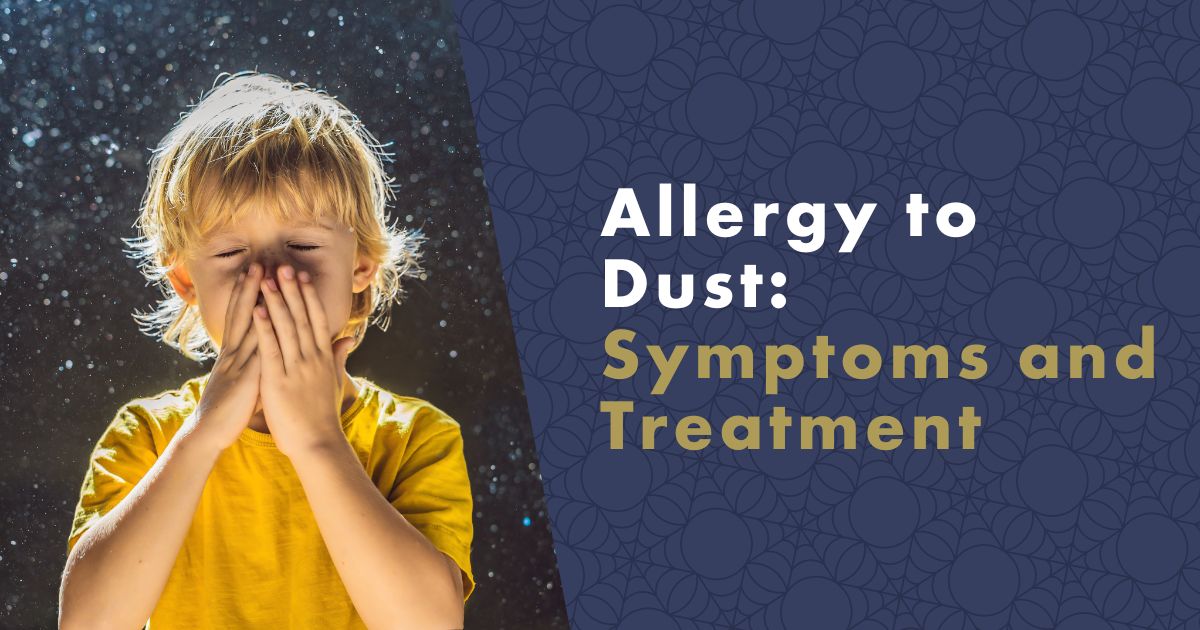Dust allergies can significantly impact daily life, triggering various symptoms that range from mild discomfort to severe respiratory issues. Recognizing the symptoms of dust allergy is crucial for timely intervention. A dust allergy attack can manifest through sneezing, itchy eyes, coughing, and even asthma-like symptoms. Distinguishing whether it's a reaction to dust or dust mite allergy is essential, as these allergens vary in their impact and require different management strategies. This article delves into the nuances of dust allergies, their symptoms, and various treatment options to help manage and mitigate their effects. If you suspect that you might have a dust allergy, keep reading.

Dust Itself Is Not an Allergen
Dust particles are irritating to the respiratory system but are not allergenic by themselves. They can be thought of as a vehicle for allergens. Only when an allergenic particle adheres to a dust particle does it become troublesome for sensitive individuals—those with allergies. Such allergenic particles could be pollen, animal dander, mold spores, or mite excrement.
Tip: Not sure if you have an allergy? In our article, you'll learn more.
Several Factors Contribute to Dustiness
How dusty your household is and the composition of the dust depend partly on how often you clean, but there are also factors beyond your control. This includes the house's location, climatic and geographic conditions, or the time of the year. More dust is generally present in winter when we ventilate less and spend more time indoors.

The amount of dust particles also varies in different rooms—more dust is found, for instance, in the bedroom, where there is more fabric and greater dryness, while less dust is found in the bathroom.
Mite Allergy = Dust Allergy
The primary allergen in household dust is mites—specifically, the excretions of mites. If you suffer from allergic symptoms indoors and claim to have a dust allergy, you most likely have an allergy to dust mites. Interestingly, mites do not thrive at altitudes above 1,200 meters above sea level. Dry and cool mountainous climates are unfavorable to them but favorable to allergy sufferers.
Article suggestion: What are dust mites and what do they cause?
Symptoms and Manifestations of Dust Allergy
- Blocked nose
- Chronic rhinitis
- Cough leading to asthma
- Increased morning fatigue and swollen face
- Recurrent sinus or nasopharyngeal inflammations
- Recurrent middle ear infections
- Atopic dermatitis, especially in young children
Recognize these symptoms? If yes, we recommend scheduling an appointment with an allergist, but also consider what changes you can make at home. While an allergist can assist with the diagnosis, consistency and prevention are key in managing household dust. Mites and their allergenic excretions are most commonly found in our beddings, sheets, and mattresses. Each mattress houses several million dust mites. Focusing on bed protection and reducing household dust is fundamental.
Tip: How to effectively eliminate dust mites in upholstery and mattress? Check out our article.
#produkty#https://www.nanospace.store/anti-dust-mite-bedding/

Reducing Household Dustiness
- Ventilate – Keep the bedroom cool and dry, with temperatures around 20°C (68°F) and maximum 50% humidity in the air
- Vacuum – Regularly vacuum using a quality vacuum cleaner, including mattresses and duvets
- Adjust the bed: Use barrier beddings and barrier mattress covers with nanofiber membranes
- Get rid of: Plush carpets, fur, heavy curtains, upholstered furniture, old plush toys, etc.
- Paint walls – Consider using so-called self-cleaning photocatalytic coatings, which autonomously eliminate allergens and dust.
- Get a quality air purifier.
Learn More about Allergies:
- How to Recognize Allergies
- Dust Mite Allergies
- Feather Allergies
- Allergy to Cats
- Allergy to Dogs
- Spring Pollen Allergies
- Identifying and Managing Allergies in Infants and Children
- Combined or Cross-Reactive Allergies
- How to Prepare for Allergy Season

